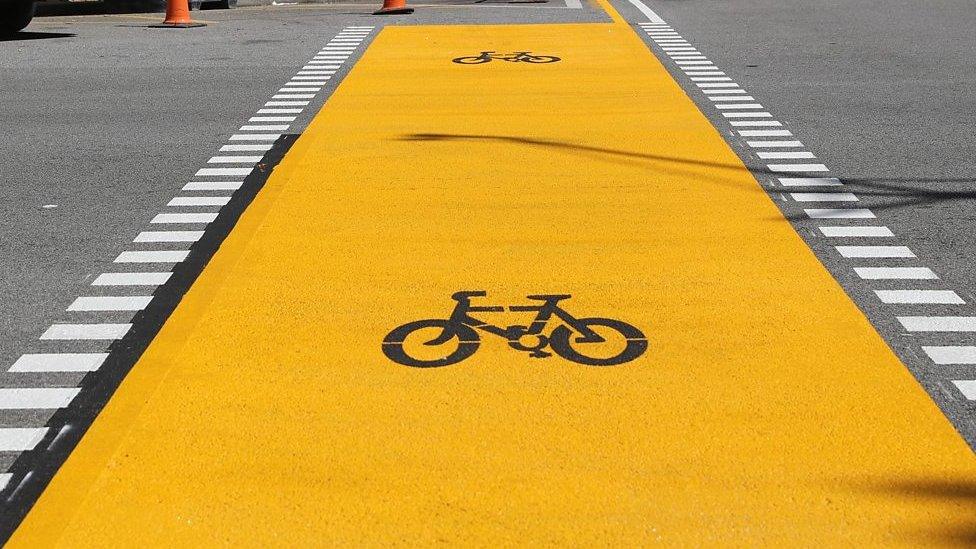Coronavirus: Will pop-up bike lanes keep new cyclists on the road?
- Published
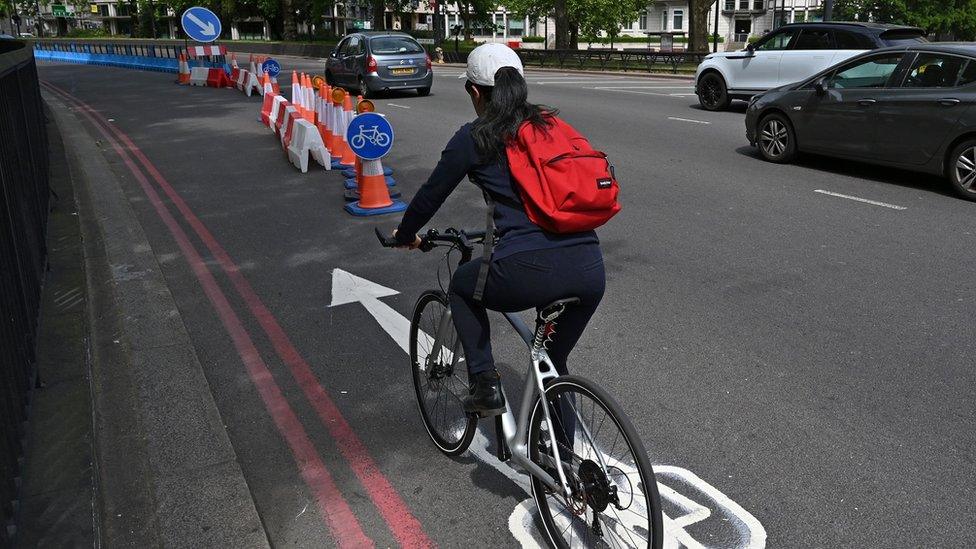
A new pop-up cycle lane has been introduced on Park Lane in central London
Britain is getting back on its bike.
Whether it's down to the need for exercise during lockdown, the joy of seeing empty streets, or the urge to avoid packed public transport in a pandemic, there has been a very definite boom in cycling across the UK.
This has prompted the government to promise money for new pop-up bike lanes and cycle-only corridors. But campaigners say more action is needed to make cyclists feel safe on the roads as traffic increases.
Jude Duncan didn't use to own a bike. Now she is part of a wave of new cyclists who have taken to the roads during the pandemic. "I wouldn't have even stepped foot in a gym before or done any exercise," the 57-year-old says.
But when lockdown began she wanted to find a way to get out of the house and keep fit, so she decided to take the plunge and buy a second-hand bike.
"It's the best thing I've ever bought," Jude says. She says cycling has also improved her mental health.
Even with the lower levels of traffic during lockdown, Jude was still wary of cycling on roads at first. However, where she lives in Leicester, the council has introduced a number of pop-up cycle lanes, which have given her the confidence to venture on to busier roads.
She's since started cycling the two-mile journey to her job in the city centre, where she works at a drug and alcohol treatment service, and has also been doing longer rides on her days off.
Leicester is one of at least 40 councils across the country that have made changes to roads, external during lockdown, such as closing streets to cars and introducing pop-up bike lanes.
Jude describes the new lanes as "a godsend". "I wouldn't go on the roads if they weren't there," she says. "If you're being encouraged to ride a bike, then you have to be able to do it safely."

Several temporary cycle lanes have been introduced in Leicester
Pete Gibbons, who lives in Bristol, has also been taking advantage of the quieter roads in lockdown to cycle with his nine-year-old daughter. In the past, their rides had been limited to a handful of trips along a local towpath. But in March they decided to try cycling into the city centre.
"Previously that has always been a bit of a no-no for me with my daughter because Bristol has got some cycle lanes but they're not really connected up, so you've got to encounter some pretty big junctions and roads to get to them," he says.
"It was a completely different experience during lockdown because there wasn't any traffic, so it felt safe to be on some of the main city roads."
Pete is keen to carry on cycling and cut his car use for environmental reasons. But he says safety is a key concern when he's with his daughter and he would like to see more cycle lanes to help them continue to feel confident on the roads as traffic picks up again.
So what are local councils doing?
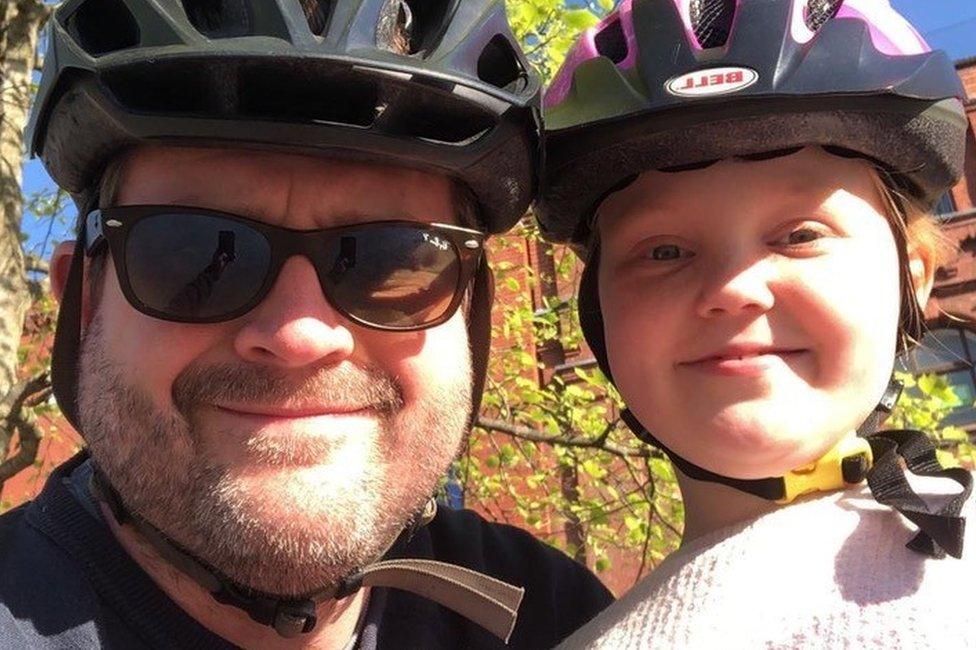
Pete cycled on the road with his daughter for the first time during lockdown
In May, the Department for Transport pledged £225m of emergency funding to help councils introduce measures like pop-up cycle lanes and safer junctions in England.
The funding is the first stage of a £5bn package to encourage greener modes of transport, which was announced in February.
Funding for similar schemes has also been announced in Scotland, external and Wales, external, while in Northern Ireland, external, pop-up cycle lanes have been introduced in Belfast.
The charity Sustrans says it is aware of changes to more than 270 streets, external so far, including the creation of 48 new temporary cycle lanes in cities including Glasgow, Newcastle and Salford.
In London, there are also plans for car-free zones as well as a further 30km (18.6 miles) of permanent cycle lanes to be built over the summer.
'Lockdown is opportunity of a lifetime for bike lanes'
It comes amid a surge in lockdown cycling, according to government figures, external.
But with traffic now creeping back up to around 75% of pre-lockdown levels, campaigners say more action is urgently needed to keep new cyclists on the roads.
Rachel White, head of public affairs at Sustrans, says progress has been mixed across the country, with measures introduced quickly in places like London, Greater Manchester and Brighton, where plans to boost cycling were already in place.
However, in other areas campaigners are frustrated at a lack of action.
Cross-party group Bike Worcester has described its local council's plans for cycling as "inadequate", arguing the leadership there is too reluctant to take away road space from cars.
Worcestershire County Council says it is "committed to improving walking and cycling routes across the county" and has submitted a bid for emergency government funding for measures including new marked cycle lanes using dashed white lines.
But Matthew Jenkins, a member of Bike Worcester who is also a Green Party councillor, says the proposals aren't enough to help new cyclists feel safe on the roads.
Instead he says the council should be reducing the number of lanes for cars or making roads one-way to create fully segregated bike lanes and more space for cyclists.
It comes at a time when the coronavirus pandemic has exacerbated financial problems for many councils. Meanwhile, in other areas, changes have encountered opposition from drivers.
In south Gloucestershire, a temporary cycle lane was removed from a major road in Filton after just five days, following complaints it was causing congestion, external.
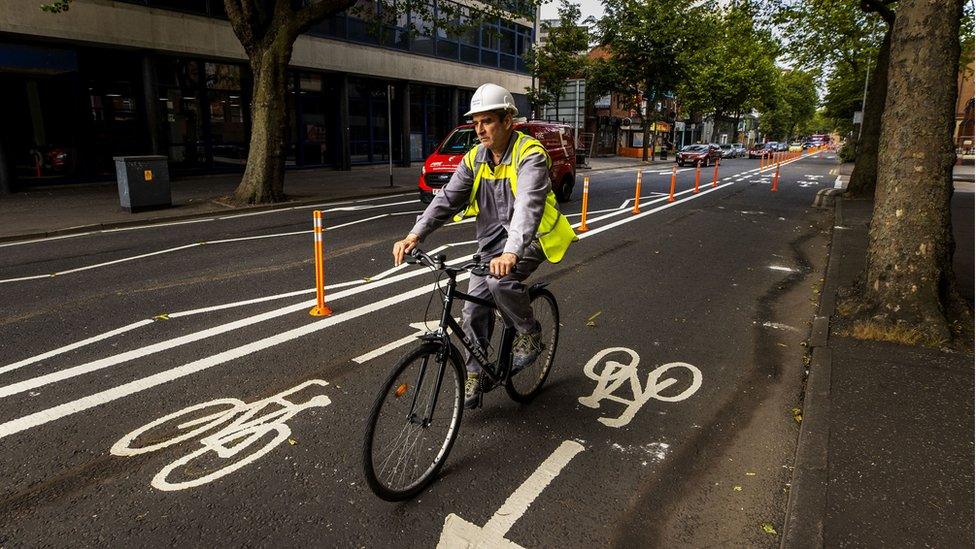
Pop-up cycle lanes have also appeared in Belfast during lockdown
Keir Gallagher, campaigns manager for Cycling UK, says the steps taken by many councils so far are "a very good start" but more needs to be done to avoid a return to congested roads and overcrowding on public transport as lockdown is eased.
"If measures aren't taken now, then unfortunately a lot of those people who have discovered cycling are going to be lost and people are going to return to their cars if they don't feel safe," he says.
"The key things we'd like to see are protected routes into town and city centres which are continuous, which feel like they would be safe to anyone, even if they're not a particularly confident cyclist.
"And then in the longer term, we need to be thinking about joining these up into more coherent networks."
For now, Jude is hoping the pop-up cycle lanes will become a permanent fixture in Leicester. "They're fantastic to get around the city," she says. "I just wonder why the council have never done it before."
- Published19 June 2020
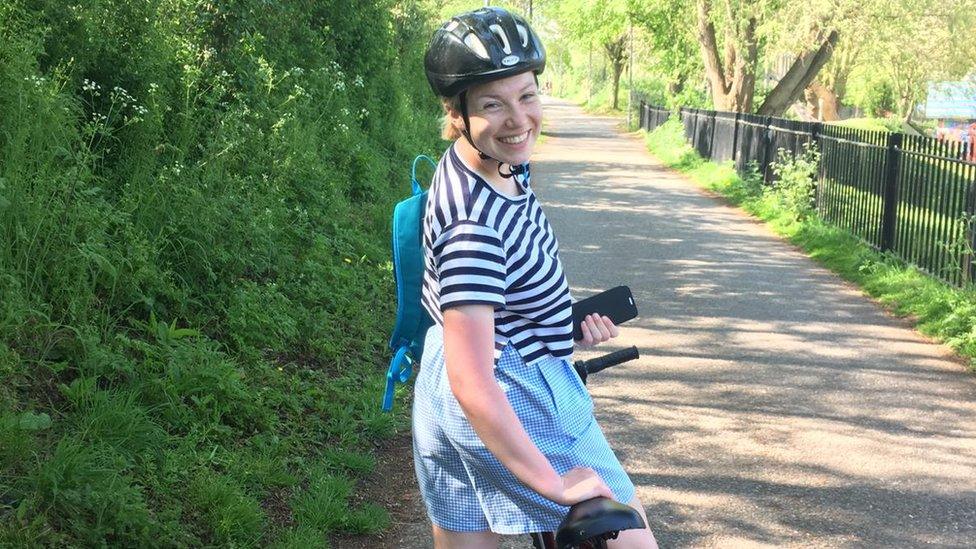
- Published7 May 2020
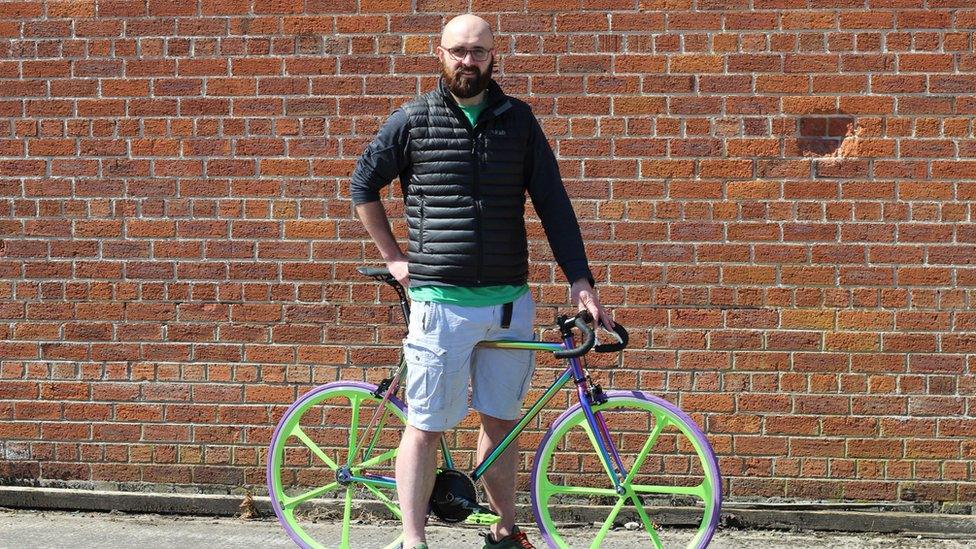
- Published19 May 2020
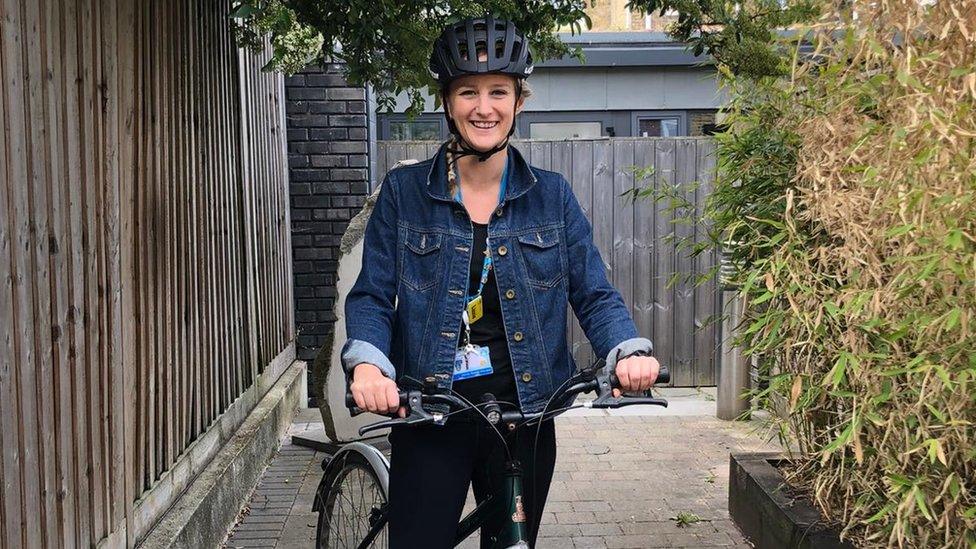
- Published15 May 2020
